At FMS 2022, we saw a few interesting uses of Kioxia’s XL-FLASH technology. As we are seeing more exotic storage, like Intel Optane get discontinued, XL-FLASH as SLC NAND is making a resurgence. SLC NAND offers lower latency and much higher endurance than today’s common TLC and QLC applications. The trade-off is lower density. It was interesting to see the drives in action at FMS 2022.
Kioxia FL6 Aerospike Demo
We did a piece on the Kioxia FL6 several months ago. Kioxia is branding its SLC technology as XL-FLASH. The drives themselves are PCIe Gen4 NVMe SSDs that can be either single or dual port.
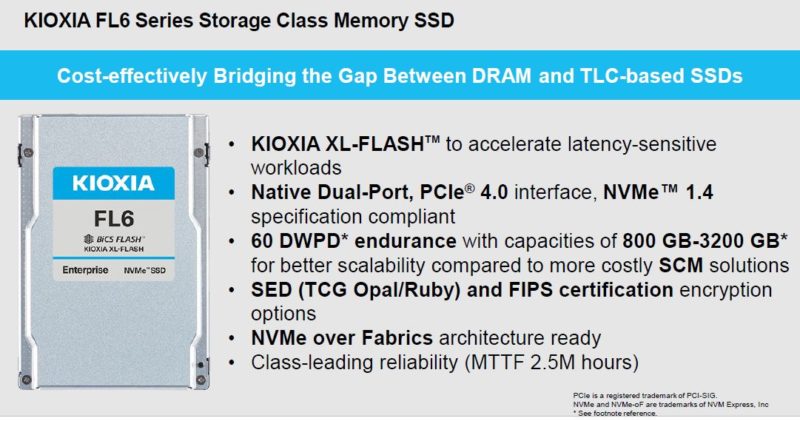
At FMS 2022, the company was showing not just the performance of SLC, but also that it was able to move larger portions of workloads to the FL6. An example of this was the Aerospike demo where Kioxia has a patch to move more of the workload to FL6. One can see more throughput along with lowe CPU utilization with the Aerospike installation patched to take advantage of the FL6.
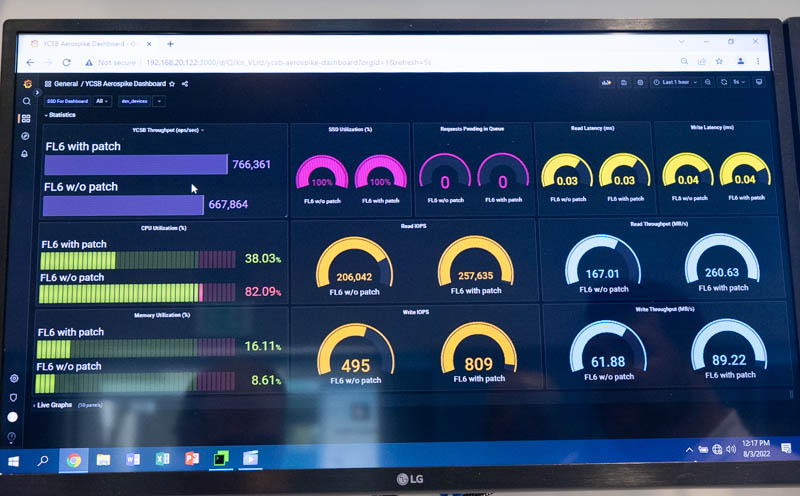
While this is not the first time we have seen the FL6, we also saw something in Kioxia’s booth that was equally, if not more intriguing. The company is making its XL-FLASH available to other companies, and they are using the technology.
DapuStor Xlenstor X2900 with Kioxia XL-FLASH
DapuStor we saw in two booths at FMS 2022. The company was in Koxia’s booth for XL-FLASH use. It was also in Marvell’s booth showing off its PCIe Gen5 drives based on the Marvell Bravera controller.
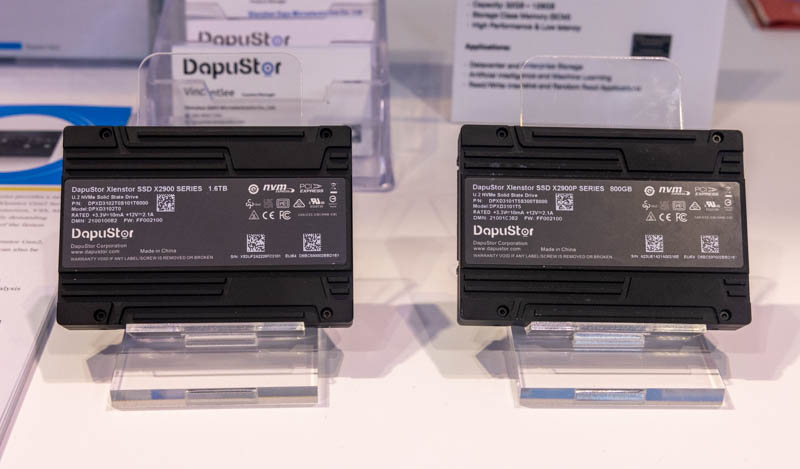
In the Koixia booth, the company was showing off the Xlenstor X2900 series SSDs with 800GB and 1.6TB models on display.
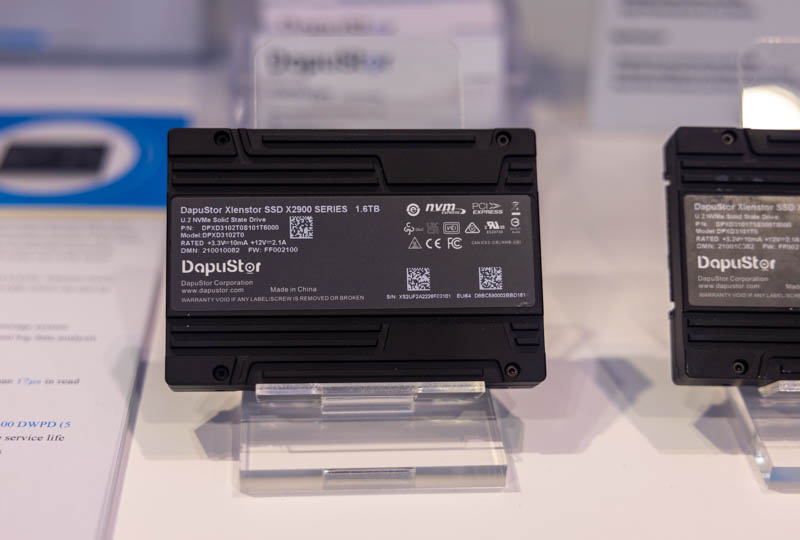
Using the Kioxia XL-FLASH, the company was able to hit very low latency for 4K random reads. Effectively, DapuStor is using the SLC NAND, and tuning controller firmware for low latency.
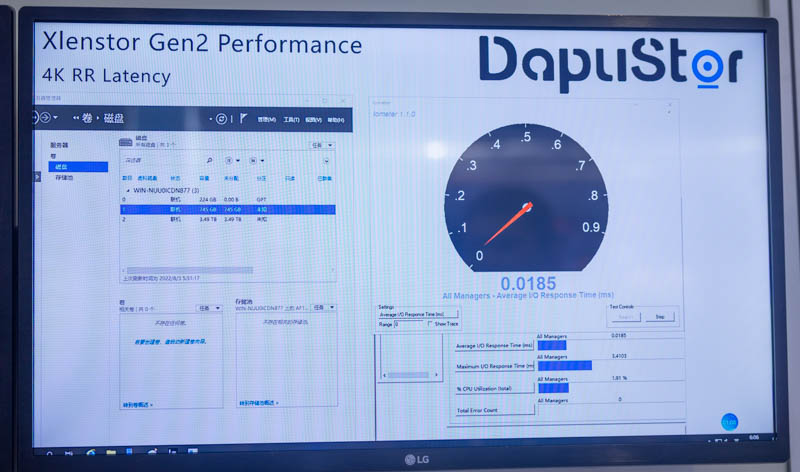
We have not seen a DapuStor drive in the wild before FMS 2022, but there were several of them on display at the show.
Final Words
After announcing that Intel Optane is winding down, the next question is what fills the gap for low-latency storage. Kioxia’s answer is XL-FLASH and is trying to fill the gap both with its own FL6 SSDs but also by selling the NAND to partners who can then create their own drives targeted at high-performance storage workloads. Something will undoubtedly fill the gap in this niche, and it was great to see both the hardware options along with some software optimization happening at FMS 2022.

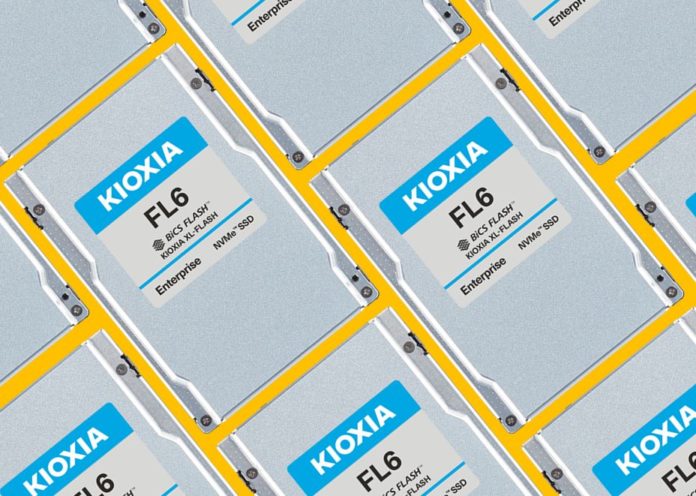


“Koxia” “Koixia” “Kioxia” … how many different ways can you spell it in one article?